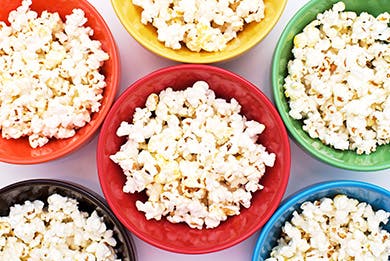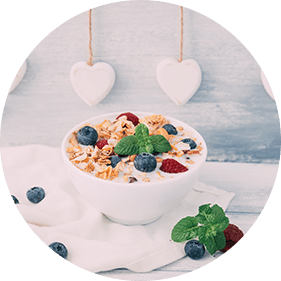Top 10 High-Fiber Foods
Another excuse to eat popcorn.
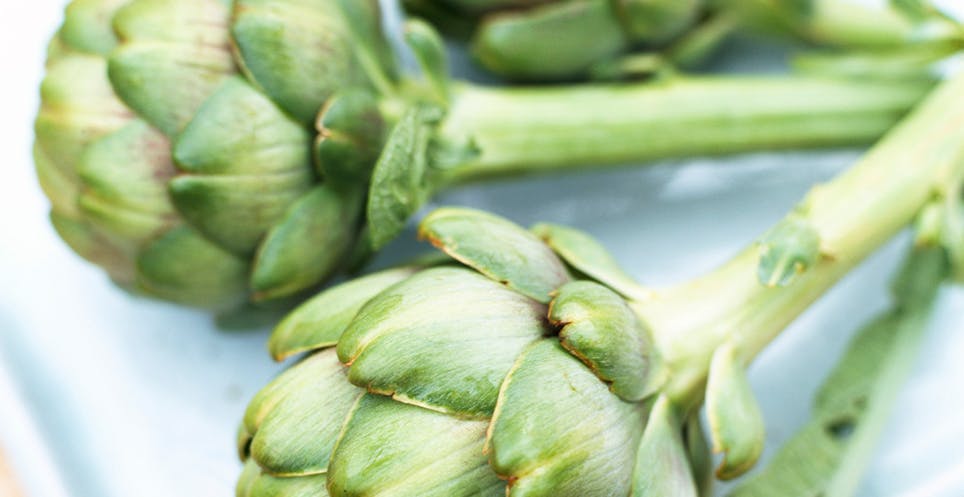

Getting your fill of fiber can seem tough, especially if you’re not in the mood for vegetables.
You may be surprised on what foods have high amounts of fiber. And why do we care about having enough fiber in our diets? Keep reading for more about why fiber is important and some high-fiber foods you can include in your everyday lifestyle.
Getting enough dietary fiber is an important part of an overall healthy lifestyle. Dietary fiber, also called roughage, includes plants, fruits, vegetables, legumes and whole grain parts that your body can't fully digest. Dietary fiber passes through your digestive tract largely undigested, until it reaches the colon or large intestine where some fibers are fermented by microbiota.1
A high-fiber diet can normalize bowel movements, soften stool and help maintain bowel health. High-fiber foods can also help you feel full as they tend to be more filling than lower-fiber foods.1
There are two different types of fiber foods: soluble and insoluble. Soluble dietary fiber is a type that dissolves in water and absorbs water during digestion to form a gel-like substance. Soluble fiber is found in foods like oats, peas, beans, fruits, and barley. Insoluble dietary fiber is the second type that doesn't dissolve in water and stays unchanged during digestion. Insoluble fiber helps promote movement through your digestive system and can be found in foods like whole-wheat flour, nuts, and vegetables such as cauliflower, green beans and potatoes.1
Incorporate high-fiber foods into your daily life in your regular meals as well as into snacks or smoothies. If you're trying to increase the fiber in your diet, it's also important to start slow and increase your dietary fiber intake over time instead of all at once.
Some high fiber foods you can add to your diet include:
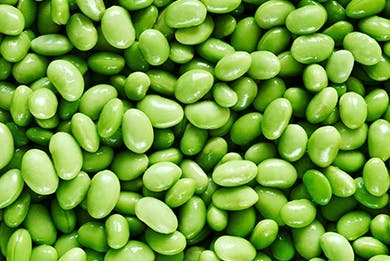
1. Beans
Lentils and other beans are an easy way to sneak fiber into your diet in soups, stews and salads. Some beans, like edamame (which is a steamed soy bean), are even a great fiber-filled snack.2 There are 9 grams of fiber in a half-cup serving of shelled edamame.2 A bonus? All of these provide a source of plant protein, too.3 Some bakers have even started including beans or bean flours in their baked goods, which research proves can still make quality cakes.4

2. Broccoli
This veggie can get pigeonholed as the fiber vegetable. Its cruciferous nature—meaning it’s from the Brassica genus of plants along with cauliflower, cabbage and kale—makes it rich in many nutrients in addition to fiber.5 Studies have shown that broccoli’s five grams of fiber per cup can positively support the bacteria in the gut, which may help your gut stay healthy and balanced.6, 7
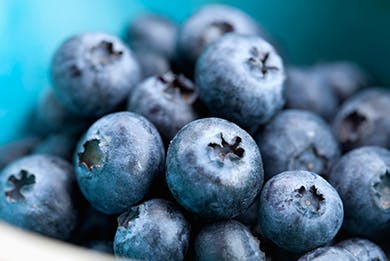
3. Berries
Berries get a lot of attention for their antioxidants, but they’re full of fiber, too. Just a cup of fresh blueberries can give you almost four grams of fiber, and there is nearly the same amount of fiber in a cup of frozen unsweetened blueberries.8 Blackberries, strawberries and raspberries are also great sources of fiber.9 Of course, one of the biggest benefits of berries is that they’re naturally low in calories, too.10
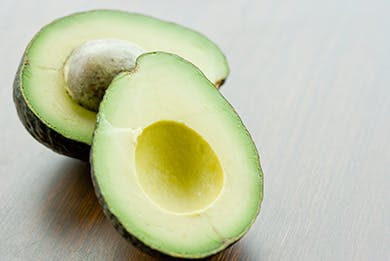
4. Avocados
Avocados pretty much go with everything—toast, salads, entrees, eggs—and while they’re often recognized for their hefty dose of healthy fats, there are 10 grams of fiber in one cup of avocado (so just imagine how much is in your guacamole).11
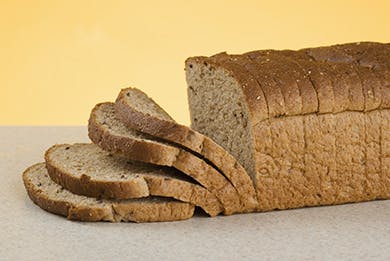
6. Whole Grains
Good news for bread lovers: Real whole grains, found in 100% whole wheat bread, whole wheat pasta, brown rice, and oats, have fiber.14, 15, 16 One tip to watch out for: as required by The Food and Drug Administration, whole grains should be the first ingredient on a food package in order for it to be considered a real whole grain.14, 15
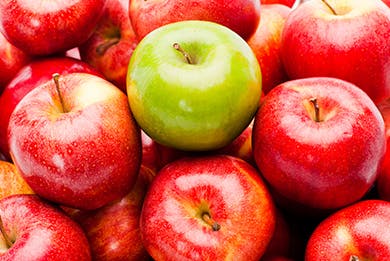
7. Apples
That old saying that “an apple a day keeps the doctor away” isn’t necessarily true, according to research, but the fruit can boost your fiber intake.17 There are about four grams of fiber in an apple, depending on its size. And, of course, they’re a nice and crunchy snack.
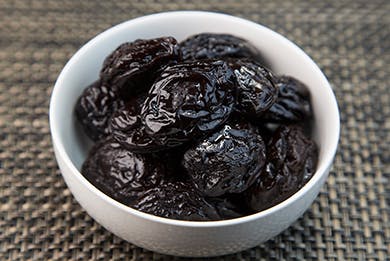
8. Dried Fruits
Dried fruits like figs, prunes and dates can boost your fiber intake dramatically and are recommended for those struggling with constipation.18 The sugar called sorbitol, which naturally occurs in these fruits, can help your bowels and lead to more comfort.18 However, eating too many can lead to cramping or diarrhea, so try a small serving and see how you feel once you’ve digested them, before noshing on too many more.18

9. Potatoes
Sweet potatoes, red potatoes, purple potatoes and even the plain old white potato are all good sources of fiber; one small potato with skin can provide close to three grams of fiber.19 The veggie has a bad reputation for running in the wrong crowds—fries and chips, to name a few. However, when not fried in oil and slathered in salt, potatoes can provide many benefits.20
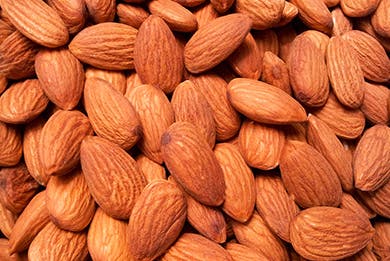
10. Nuts
Nuts aren’t just a great source of protein and healthy fats—sunflower seeds and almonds each have more than three grams of fiber in a serving. They can help you reach the 25-gram intake of fiber recommended by the FDA for women and 38-gram recommendation for men.21, 22* Raw or dry-roasted nuts are preferred over the pre-packaged variety (which are usually cooked in oils that can add extra, unnecessary calories.)23 Even nut butters can pack a punch of fiber.24
- Dietary Fiber: Essential for a Healthy Diet. Mayo Clinic. https://www.mayoclinic.org/healthy-lifestyle/nutrition-and-healthy-eating/in-depth/fiber/art-20043983/ Accessed 2/19/2020.
- Magee, Elaine. "The Secret of Edamame." WebMD. Web. http://www.webmd.com/diet/features/the-secret-of-edamame#1
- Magee, Elaine. "6 Foods and Tips for More Fiber." WebMD. Ed. Louise Chang. 29 Mar. 2010. Web. http://www.webmd.com/diet/features/6-foods-and-tips-for-more-fiber#1
- L, Belghith-Fendri, Chaari F, Kallel F, Zouari-Ellouzi S, Ghorbel R, Besbes S, Ellouz-Chaabouni S, and Ghribi-Aydi D. "Pea and Broad Bean Pods as a Natural Source of Dietary Fiber: The Impact on Texture and Sensory Properties of Cake." Journal of Food Science. U.S. National Library of Medicine, Oct. 2016.Web.https://www.ncbi.nlm.nih.gov/pubmed/27650811
- "Cruciferous Vegetables and Cancer Prevention." National Cancer Institute. 7 June 2012. Web. https://www.cancer.gov/about-cancer/causes-prevention/risk/diet/cruciferous-vegetables-fact-sheet.
- Li, Fei, Meredith A. J. Hullar, Yvonne Schwarz, and Johanna W. Lampe. "Human Gut Bacterial Communities Are Altered by Addition of Cruciferous Vegetables to a Controlled Fruit- and Vegetable-Free Diet." The Journal of Nutrition. American Society for Nutrition, Sept. 2009. Web. https://www.ncbi.nlm.nih.gov/pmc/articles/PMC2728691/.
- Zhang, Yu-Jie, Sha Li, Ren-You Gan, Tong Zhou, Dong-Ping Xu, and Hua-Bin Li. "Impacts of Gut Bacteria on Human Health and Diseases." International Journal of Molecular Sciences. MDPI, Apr. 2015. Web.https://www.ncbi.nlm.nih.gov/pmc/articles/PMC4425030/
- "How to Eat 37 Grams of Fiber in a Day." WebMD. Ed. Laura J. Martin. 14 May 2016. Web. http://www.webmd.com/diet/eat-this-fiber-chart
- Glassman, Keri. "Why Are Blackberries Good for Me?" WebMD. Web.http://www.webmd.com/food-recipes/features/why-are-blackberries-good-for-me.
- Heyman, Lovisa, Ulrika Axling, Narda Blanco, Olov Sterner, Cecilia Holm, and Karin Berger. "Evaluation of Beneficial Metabolic Effects of Berries in High-Fat Fed C57BL/6J Mice." Journal of Nutrition and Metabolism. Hindawi Publishing Corporation, 2014. Web. https://www.ncbi.nlm.nih.gov/pmc/articles/PMC3941780/.
- "USDA Food Composition Databases." Food Composition Databases Show Foods List. Web. https://ndb.nal.usda.gov/ndb/search/list?qlookup=09037.
- Ferrari, Nancy. "Making One Change — Getting More Fiber — Can Help with Weight Loss." Harvard Health Publications. Harvard Medical School, 17 Feb. 2015. Web.http://www.health.harvard.edu/blog/making-one-change-getting-fiber-can-help-weight-loss-201502177721.
- Doheny, Kathleen. "Popcorn Packed With Antioxidants." WebMD. 25 Mar. 2012. Web. http://www.webmd.com/food-recipes/news/20120325/popcorn-packed-with-antioxidants#1.
- McKeown, Nicola M., Lisa M. Troy, Paul F. Jacques, Udo Hoffmann, Christopher J. O'Donnell, and Caroline S. Fox. "Whole- and Refined-grain Intakes Are Differentially Associated with Abdominal Visceral and Subcutaneous Adiposity in Healthy Adults: The Framingham Heart Study." The American Journal of Clinical Nutrition. American Society for Nutrition, Nov. 2010. Web.https://www.ncbi.nlm.nih.gov/pmc/articles/PMC2954448/.
- Jonnalagadda, Satya S., Lisa Harnack, Rui Hai Liu, Nicola McKeown, Chris Seal, Simin Liu, and George C. Fahey. "Putting the Whole Grain Puzzle Together: Health Benefits Associated with Whole Grains—Summary of American Society for Nutrition 2010 Satellite Symposium." The Journal of Nutrition. American Society for Nutrition, May 2011. Web. https://www.ncbi.nlm.nih.gov/pmc/articles/PMC3078018/.
- "Existing Standards for Whole Grains." Oldways Whole Grains Council. Web.http://wholegrainscouncil.org/whole-grains-101/whats-whole-grain-refined-grain/existing-standards-whole-grains.
- Pendick, Daniel. "An Apple a Day May Not Keep the Doctor Away, but It's a Healthy Choice Anyway." Harvard Health Publications. Harvard Medical School, 2 Apr. 2015. Web. http://www.health.harvard.edu/blog/an-apple-a-day-may-not-keep-the-doctor-away-but-its-a-healthy-choice-anyway-201504027850.
- Martin, Laura J. "Dietary Fiber for Constipation." WebMD. N.p., 8 May 2016. Web.http://www.webmd.com/digestive-disorders/dietary-fiber-the-natural-solution-for-constipation#2-7.
- "Chart of High-fiber Foods." Mayo Clinic. 8 Oct. 2015. Web.http://www.mayoclinic.org/healthy-lifestyle/nutrition-and-healthy-eating/in-depth/high-fiber-foods/art-20050948.
- 19. JC, King, and Slavin JL. "White Potatoes, Human Health, and Dietary Guidance." Advances in Nutrition. U.S. National Library of Medicine, 1 May 2013. Web.https://www.ncbi.nlm.nih.gov/pubmed/23674809.
- "Slideshow: High-Fiber Super Foods." WebMD. Ed. Laura J. Martin. 14 May 2014. Web. http://www.webmd.com/diet/fiber-health-benefits-15/slideshow-high-fiber-foods.
- "Fiber: Daily Recommendations for Adults." Mayo Clinic. 22 Sept. 2015. Web.http://www.mayoclinic.org/healthy-lifestyle/nutrition-and-healthy-eating/in-depth/fiber/art-20043983?pg=2.
- Ostadrahimi, Alireza, Fereshteh Ashrafnejad, Abdolhassan Kazemi, Nafiseh Sargheini, Reza Mahdavi, Mohammadreza Farshchian, and Sepideh Mahluji. "Aflatoxin in Raw and Salt-Roasted Nuts (Pistachios, Peanuts and Walnuts) Sold in Markets of Tabriz, Iran." Jundishapur Journal of Microbiology. Jan. 2014. Web.https://www.ncbi.nlm.nih.gov/pmc/articles/PMC4138677/.
- CE, Reis, Bordalo LA, Rocha AL, Freitas DM, Da Silva MV, De Faria VS, Martino HS, Costa NM, and Alfenas RC. "Ground Roasted Peanuts Leads to a Lower Post-prandial Glycemic Response than Raw Peanuts." Nutricion Hospitalaria. U.S. National Library of Medicine, July-Aug. 2011. Web. 03 Feb. 2017.https://www.ncbi.nlm.nih.gov/pubmed/22470019.
Nourish the Goodness Inside
Benefiber is an easy way to add fiber to your life.
$1.50 OFF BENEFIBER


